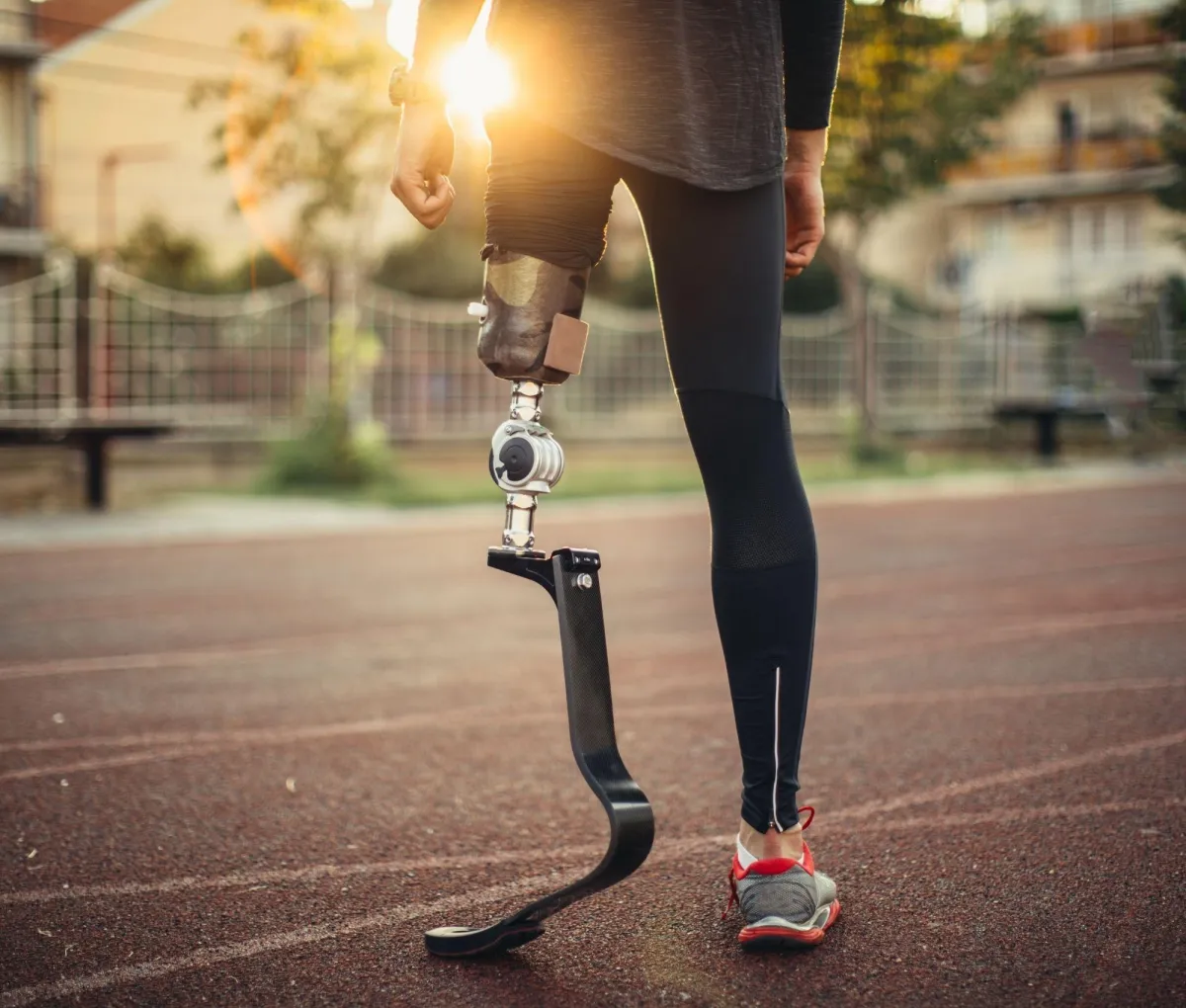Custom Bracing & Prosthetics
Regain Mobility, Restore Confidence
At MCBDME, we understand that limb loss can be life-altering. Our mission is to empower individuals with high-quality prosthetic solutions that restore mobility and enhance quality of life.
With over 50 years of combined experience in the medical industry, our dedicated team provides personalized care tailored to each patient's unique needs.

Comprehensive Prosthetic Services
We offer a full spectrum of prosthetic services, ensuring that each patient receives the most suitable solution
Understanding K Levels
We utilize the Medicare K-Level system to determine the appropriate prosthetic components based on a patient's functional mobility:
K0
No ability to ambulate or transfer safely; prosthesis does not enhance quality of life.
Not covered by insurance
K1
Ability to use a prosthesis for transfers or ambulation on level surfaces at fixed cadence.
Not covered by insurance
K2
Ability for ambulation with low-level environmental barriers.
K3
Ability for ambulation with variable cadence; suitable for community ambulation.
K4
Ability for high-impact, energy levels; suitable for children, active adults, or athletes.
Upper & Lower Limb Prosthetics
We offer a full range of prosthetic solutions for patients at every stage of recovery:
Upper Limb Prosthetics
Partial hand & finger
Transradial (below elbow)
Transhumeral (above elbow)
Shoulder disarticulation
Lower Limb Prosthetics
Partial foot
Transtibial (below knee)
Transfemoral (above knee)
Hip disarticulation
Each prosthesis is custom-designed and fitted by certified clinicians to match your unique anatomy, mobility goals, and activity level.
❓ Frequently Asked Questions
Q: What types of prosthetics do you offer?
A: We provide both upper and lower limb prosthetics, including options for partial foot, below-knee (transtibial), above-knee (transfemoral), hip disarticulation, partial hand, and full arm prosthetics. Each device is custom-fit and selected based on your mobility goals and lifestyle.
Q: How do I know if I’m a candidate for a prosthetic device?
A: Your eligibility depends on your overall health, residual limb condition, and functional mobility goals. Our clinicians conduct a full evaluation and consult with your physician to determine the best path forward.
Q: What is a K-Level and why does it matter?
A: K-Levels are used to classify a patient’s potential for mobility and help determine what prosthetic components are covered by insurance. They range from K0 (no mobility potential) to K4 (highly active individuals). We will help assess and document your K-Level during the consultation.
Q: Will my insurance cover the cost of a prosthetic?
A: Most insurance providers, including Medicare and Medicaid, cover medically necessary prosthetic devices. Our team will work with you and your insurance company to get all necessary approvals and minimize out-of-pocket costs.
Q: How long does it take to receive my prosthetic?
A: Once authorization is received, prosthetic delivery typically occurs within 5 business days. The fitting and follow-up process ensures your device is customized, comfortable, and functional.
Q: Will someone come to my home to fit the prosthetic?
A: Yes. We provide in-home fitting, training, and adjustments for your convenience. Our specialists make sure you feel confident using your new device in the comfort of your home.
Q: What happens if my prosthetic breaks or doesn’t fit properly?
A: We offer prompt support and repairs. If you ever have an issue, call us and we’ll schedule an in-home visit within 48 hours to assess and resolve the problem.
Q: Do you provide training on how to use the prosthetic?
A: Absolutely. We provide one-on-one education to ensure you know how to use, maintain, and care for your prosthetic. We also collaborate with your rehab team to support your progress.
🤝 Our Trusted Vendors
We partner with industry leaders to ensure quality and comfort:
Want To Start A Custom Bracing/Prosthetic Assessment?
We can help you with a free Consultation

Address:
293 Lafayette Avenue, Suite 104
Hawthorne, NJ 07506
Contact Us
General Email: [email protected]
Fax: (973) 689-6120
(973) 553-0777







